Target Information
| Target General Information | Top | |||||
|---|---|---|---|---|---|---|
| Target ID |
T65291
(Former ID: TTDS00053)
|
|||||
| Target Name |
Fatty aldehyde dehydrogenase (ALDH3A2)
|
|||||
| Synonyms |
Microsomal aldehyde dehydrogenase; Aldehyde dehydrogenase family 3 member A2; Aldehyde dehydrogenase 10; ALDH10
Click to Show/Hide
|
|||||
| Gene Name |
ALDH3A2
|
|||||
| Target Type |
Successful target
|
[1] | ||||
| Disease | [+] 1 Target-related Diseases | + | ||||
| 1 | Substance abuse [ICD-11: 6C40] | |||||
| Function |
Catalyzes the oxidation of medium and long chain aliphatic aldehydes to fatty acids. Active on a variety of saturated and unsaturated aliphatic aldehydes between 6 and 24 carbons in length. Responsible for conversion of the sphingosine 1-phosphate (S1P) degradation product hexadecenal to hexadecenoic acid.
Click to Show/Hide
|
|||||
| BioChemical Class |
Aldehyde/oxo donor oxidoreductase
|
|||||
| UniProt ID | ||||||
| EC Number |
EC 1.2.1.3
|
|||||
| Sequence |
MELEVRRVRQAFLSGRSRPLRFRLQQLEALRRMVQEREKDILTAIAADLCKSEFNVYSQE
VITVLGEIDFMLENLPEWVTAKPVKKNVLTMLDEAYIQPQPLGVVLIIGAWNYPFVLTIQ PLIGAIAAGNAVIIKPSELSENTAKILAKLLPQYLDQDLYIVINGGVEETTELLKQRFDH IFYTGNTAVGKIVMEAAAKHLTPVTLELGGKSPCYIDKDCDLDIVCRRITWGKYMNCGQT CIAPDYILCEASLQNQIVWKIKETVKEFYGENIKESPDYERIINLRHFKRILSLLEGQKI AFGGETDEATRYIAPTVLTDVDPKTKVMQEEIFGPILPIVPVKNVDEAINFINEREKPLA LYVFSHNHKLIKRMIDETSSGGVTGNDVIMHFTLNSFPFGGVGSSGMGAYHGKHSFDTFS HQRPCLLKSLKREGANKLRYPPNSQSKVDWGKFFLLKRFNKEKLGLLLLTFLGIVAAVLV KAEYY Click to Show/Hide
|
|||||
| 3D Structure | Click to Show 3D Structure of This Target | PDB | ||||
| Drugs and Modes of Action | Top | |||||
|---|---|---|---|---|---|---|
| Approved Drug(s) | [+] 1 Approved Drugs | + | ||||
| 1 | Disulfiram | Drug Info | Approved | Alcohol dependence | [2], [3] | |
| Discontinued Drug(s) | [+] 1 Discontinued Drugs | + | ||||
| 1 | NPS 1776 | Drug Info | Discontinued in Phase 2 | Epilepsy | [4] | |
| Mode of Action | [+] 2 Modes of Action | + | ||||
| Inhibitor | [+] 4 Inhibitor drugs | + | ||||
| 1 | Disulfiram | Drug Info | [1] | |||
| 2 | Aloe-emodin | Drug Info | [6] | |||
| 3 | NSC-527035 | Drug Info | [7] | |||
| 4 | S-methyl 4-methyl-4-morpholinopent-2-ynethioate | Drug Info | [8] | |||
| Modulator | [+] 1 Modulator drugs | + | ||||
| 1 | NPS 1776 | Drug Info | [5] | |||
| Cell-based Target Expression Variations | Top | |||||
|---|---|---|---|---|---|---|
| Cell-based Target Expression Variations | ||||||
| Different Human System Profiles of Target | Top |
|---|---|
|
Human Similarity Proteins
of target is determined by comparing the sequence similarity of all human proteins with the target based on BLAST. The similarity proteins for a target are defined as the proteins with E-value < 0.005 and outside the protein families of the target.
A target that has fewer human similarity proteins outside its family is commonly regarded to possess a greater capacity to avoid undesired interactions and thus increase the possibility of finding successful drugs
(Brief Bioinform, 21: 649-662, 2020).
Human Tissue Distribution
of target is determined from a proteomics study that quantified more than 12,000 genes across 32 normal human tissues. Tissue Specificity (TS) score was used to define the enrichment of target across tissues.
The distribution of targets among different tissues or organs need to be taken into consideration when assessing the target druggability, as it is generally accepted that the wider the target distribution, the greater the concern over potential adverse effects
(Nat Rev Drug Discov, 20: 64-81, 2021).
Human Pathway Affiliation
of target is determined by the life-essential pathways provided on KEGG database. The target-affiliated pathways were defined based on the following two criteria (a) the pathways of the studied target should be life-essential for both healthy individuals and patients, and (b) the studied target should occupy an upstream position in the pathways and therefore had the ability to regulate biological function.
Targets involved in a fewer pathways have greater likelihood to be successfully developed, while those associated with more human pathways increase the chance of undesirable interferences with other human processes
(Pharmacol Rev, 58: 259-279, 2006).
Biological Network Descriptors
of target is determined based on a human protein-protein interactions (PPI) network consisting of 9,309 proteins and 52,713 PPIs, which were with a high confidence score of ≥ 0.95 collected from STRING database.
The network properties of targets based on protein-protein interactions (PPIs) have been widely adopted for the assessment of target’s druggability. Proteins with high node degree tend to have a high impact on network function through multiple interactions, while proteins with high betweenness centrality are regarded to be central for communication in interaction networks and regulate the flow of signaling information
(Front Pharmacol, 9, 1245, 2018;
Curr Opin Struct Biol. 44:134-142, 2017).
Human Similarity Proteins
Human Tissue Distribution
Human Pathway Affiliation
Biological Network Descriptors
|
|
|
There is no similarity protein (E value < 0.005) for this target
|
|
Note:
If a protein has TS (tissue specficity) scores at least in one tissue >= 2.5, this protein is called tissue-enriched (including tissue-enriched-but-not-specific and tissue-specific). In the plots, the vertical lines are at thresholds 2.5 and 4.
|
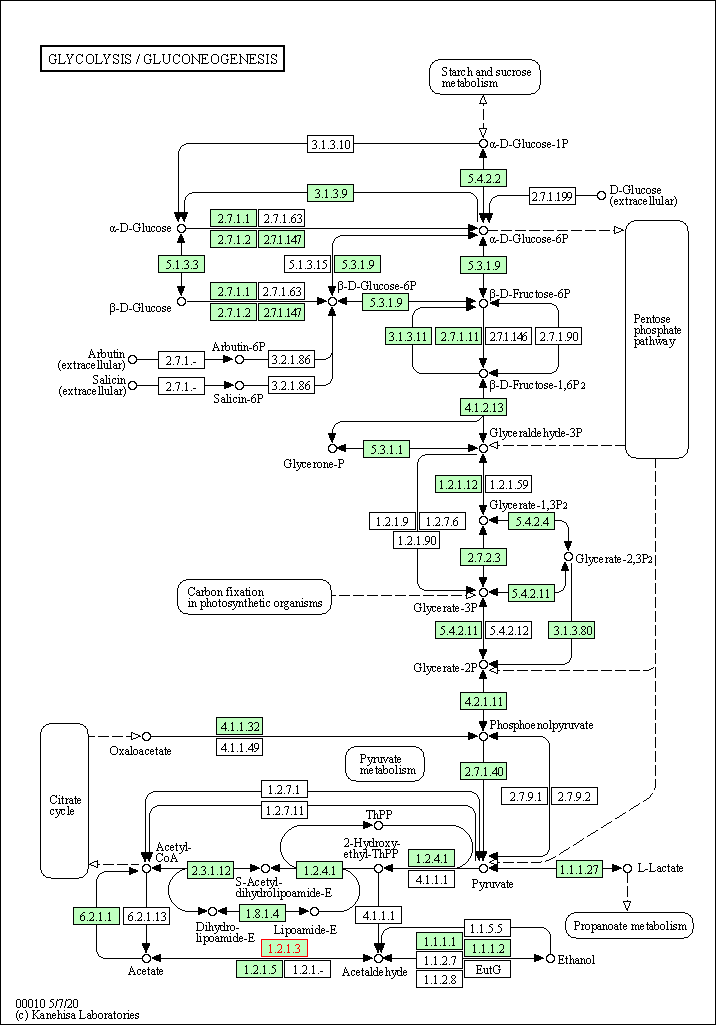

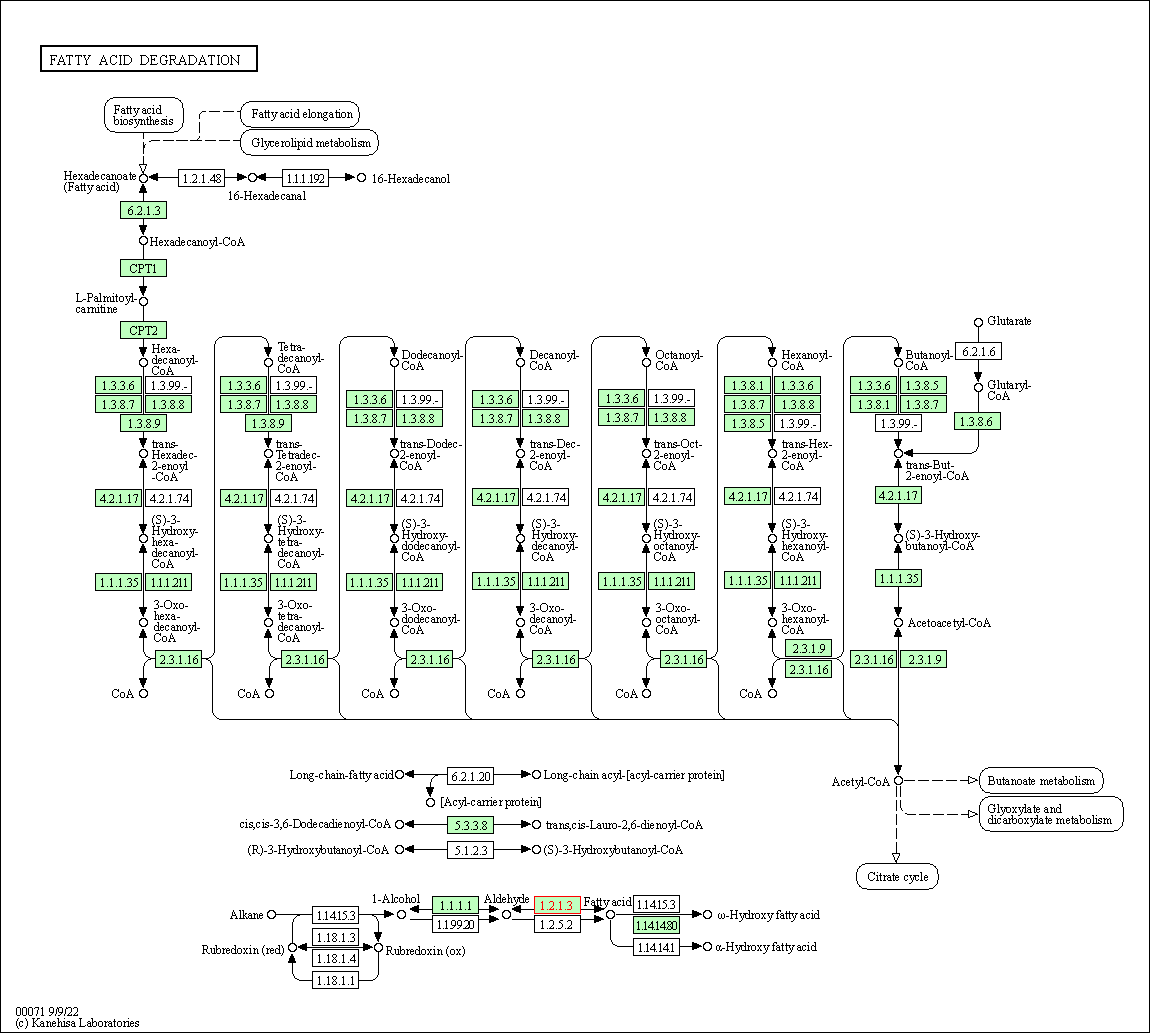
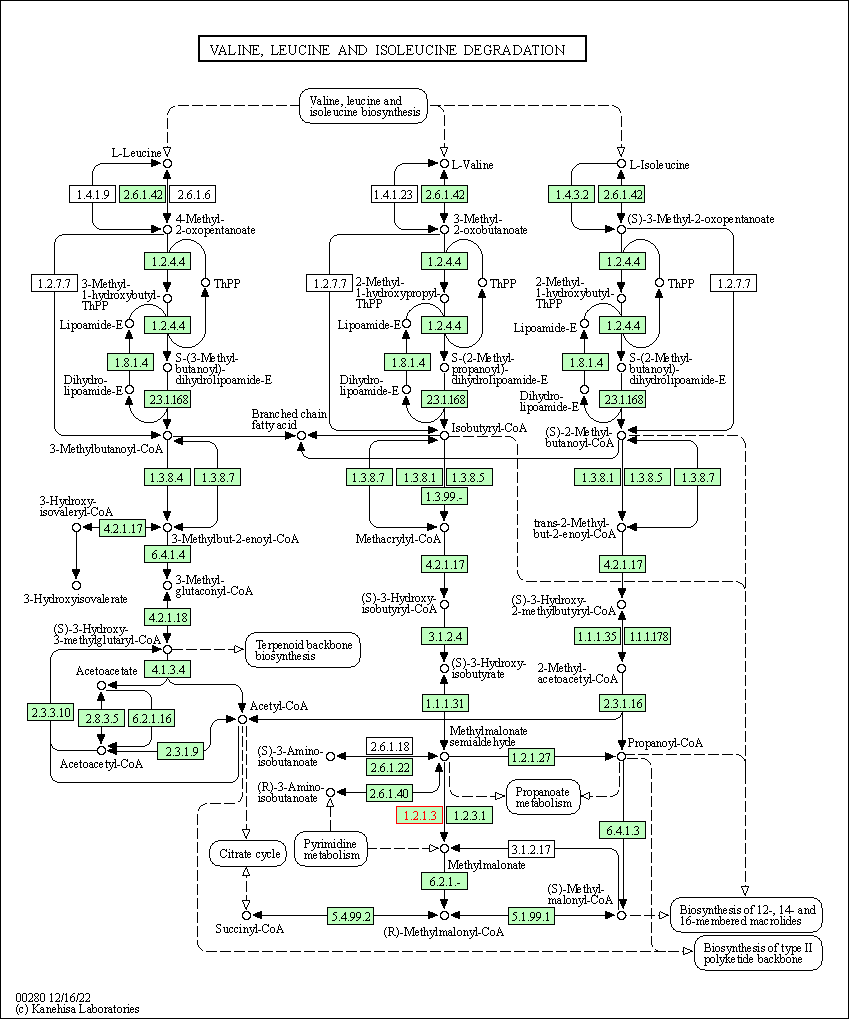
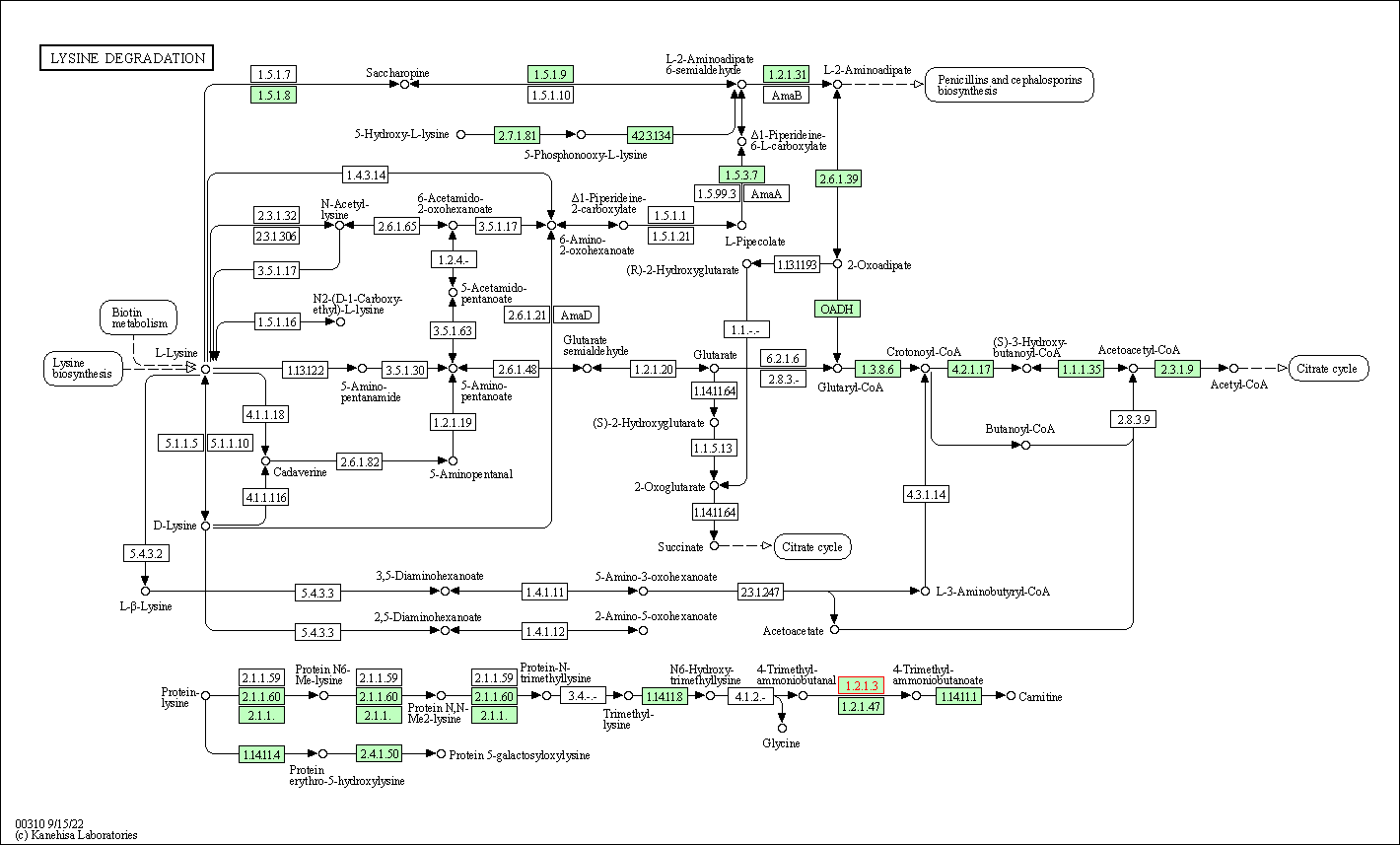

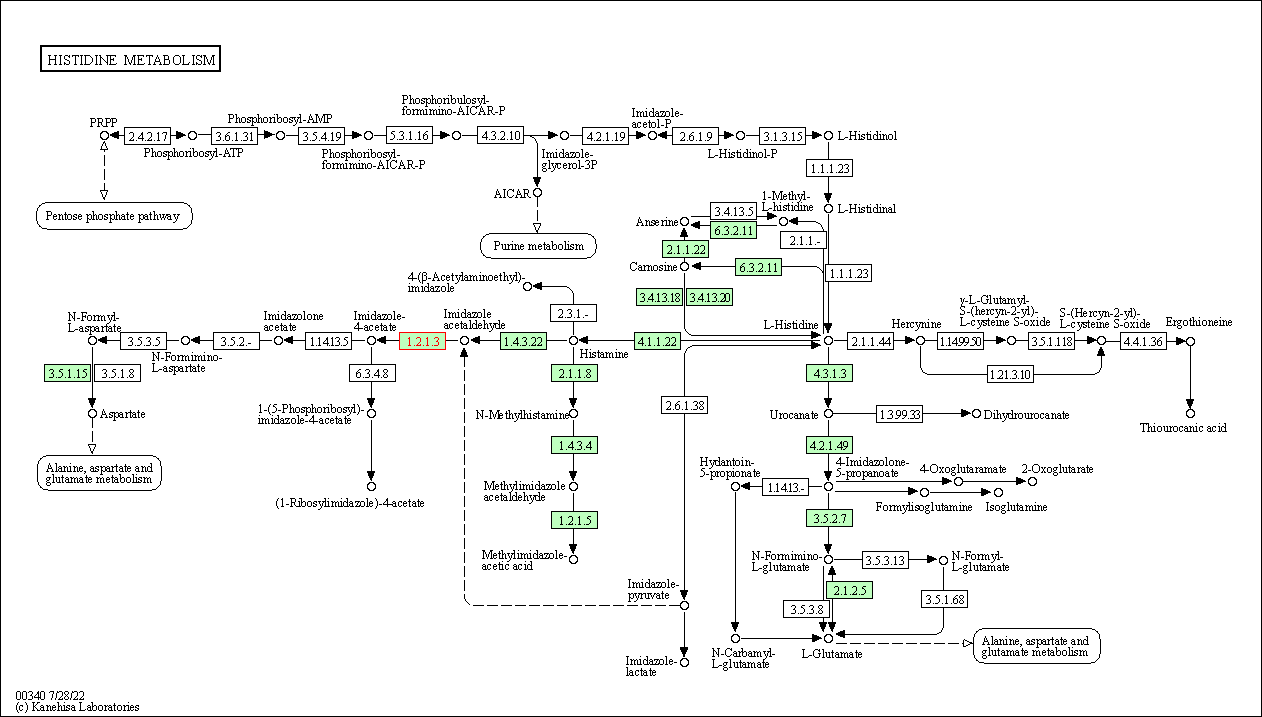
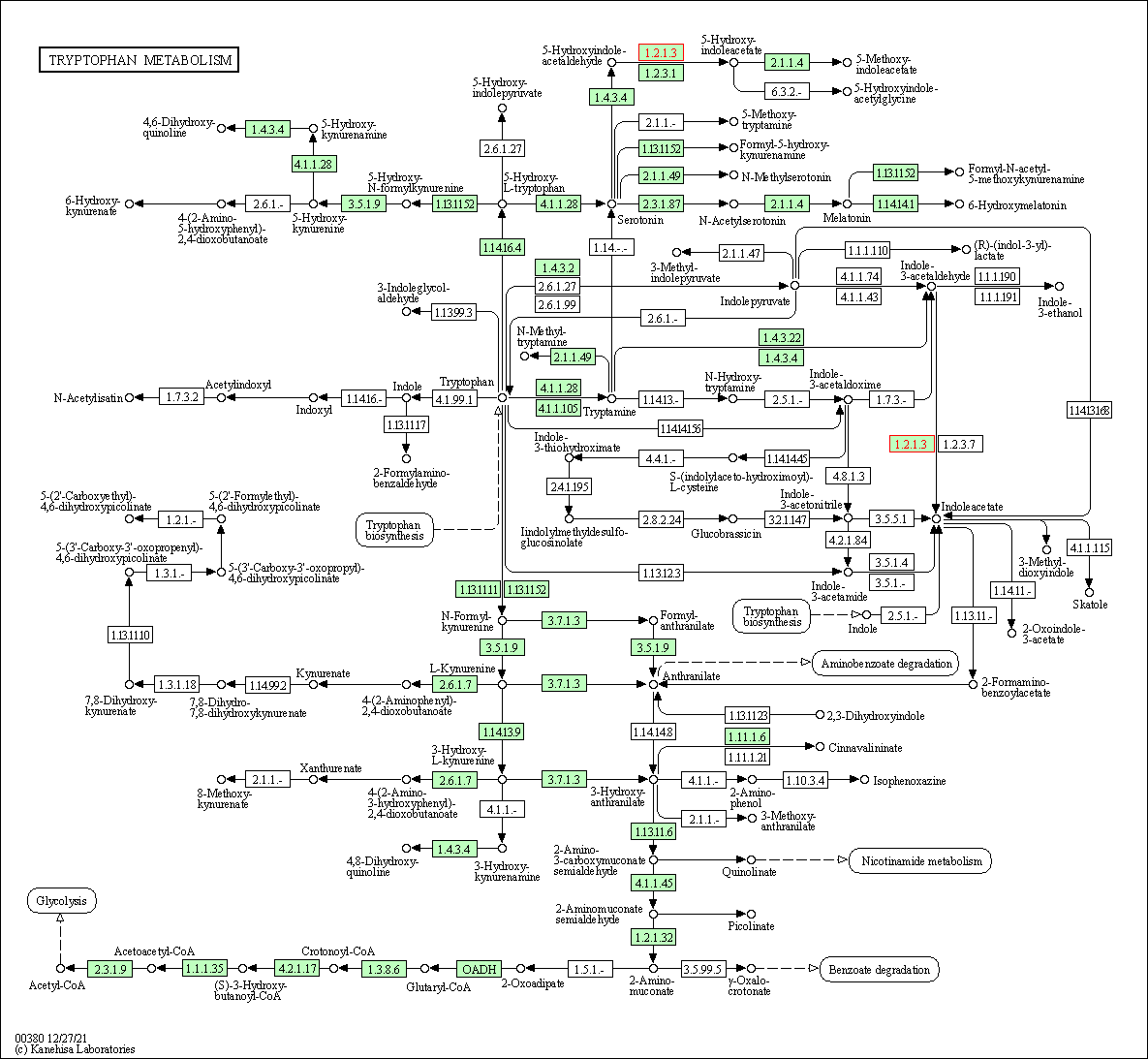
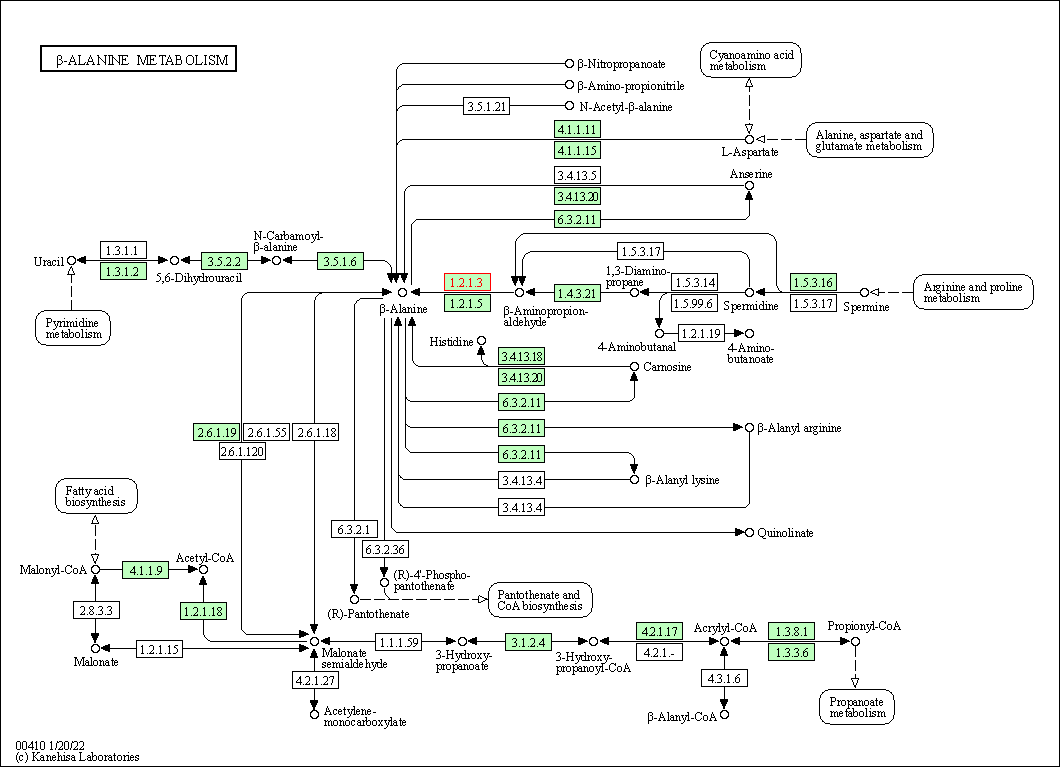
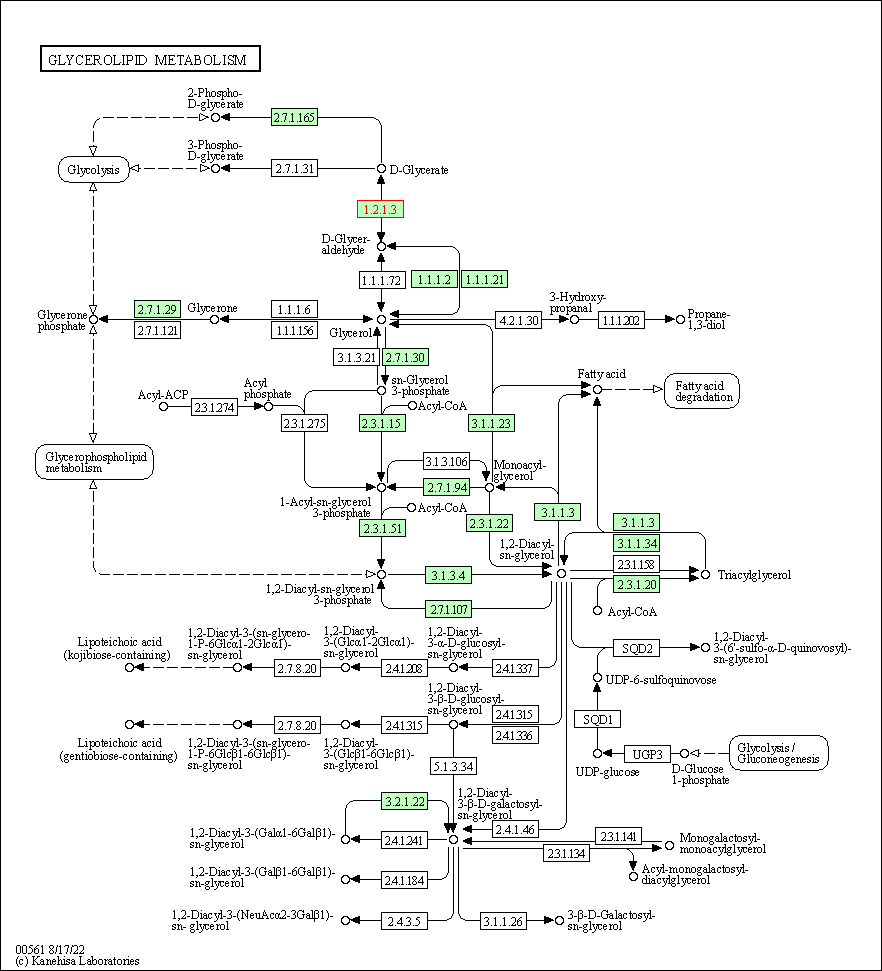

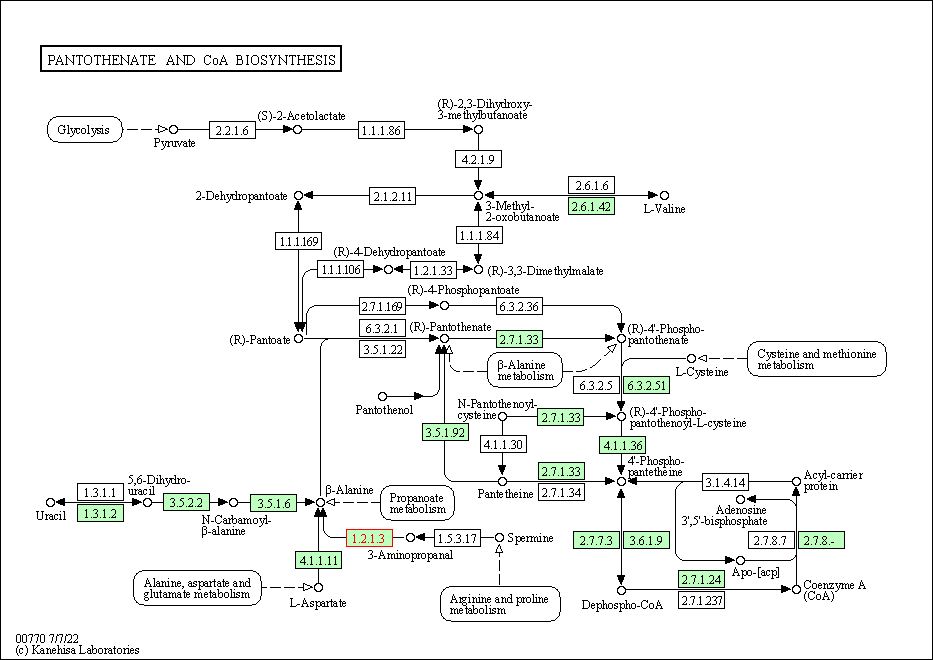
| KEGG Pathway | Pathway ID | Affiliated Target | Pathway Map |
|---|---|---|---|
| Glycolysis / Gluconeogenesis | hsa00010 | Affiliated Target |

|
| Class: Metabolism => Carbohydrate metabolism | Pathway Hierarchy | ||
| Ascorbate and aldarate metabolism | hsa00053 | Affiliated Target |

|
| Class: Metabolism => Carbohydrate metabolism | Pathway Hierarchy | ||
| Fatty acid degradation | hsa00071 | Affiliated Target |

|
| Class: Metabolism => Lipid metabolism | Pathway Hierarchy | ||
| Valine, leucine and isoleucine degradation | hsa00280 | Affiliated Target |

|
| Class: Metabolism => Amino acid metabolism | Pathway Hierarchy | ||
| Lysine degradation | hsa00310 | Affiliated Target |

|
| Class: Metabolism => Amino acid metabolism | Pathway Hierarchy | ||
| Arginine and proline metabolism | hsa00330 | Affiliated Target |

|
| Class: Metabolism => Amino acid metabolism | Pathway Hierarchy | ||
| Histidine metabolism | hsa00340 | Affiliated Target |

|
| Class: Metabolism => Amino acid metabolism | Pathway Hierarchy | ||
| Tryptophan metabolism | hsa00380 | Affiliated Target |

|
| Class: Metabolism => Amino acid metabolism | Pathway Hierarchy | ||
| beta-Alanine metabolism | hsa00410 | Affiliated Target |

|
| Class: Metabolism => Metabolism of other amino acids | Pathway Hierarchy | ||
| Glycerolipid metabolism | hsa00561 | Affiliated Target |

|
| Class: Metabolism => Lipid metabolism | Pathway Hierarchy | ||
| Pyruvate metabolism | hsa00620 | Affiliated Target |

|
| Class: Metabolism => Carbohydrate metabolism | Pathway Hierarchy | ||
| Pantothenate and CoA biosynthesis | hsa00770 | Affiliated Target |

|
| Class: Metabolism => Metabolism of cofactors and vitamins | Pathway Hierarchy | ||
| Click to Show/Hide the Information of Affiliated Human Pathways | |||
| Degree | 4 | Degree centrality | 4.30E-04 | Betweenness centrality | 6.05E-04 |
|---|---|---|---|---|---|
| Closeness centrality | 1.71E-01 | Radiality | 1.27E+01 | Clustering coefficient | 0.00E+00 |
| Neighborhood connectivity | 1.30E+01 | Topological coefficient | 2.93E-01 | Eccentricity | 12 |
| Download | Click to Download the Full PPI Network of This Target | ||||
| Drug Property Profile of Target | Top | |
|---|---|---|
| (1) Molecular Weight (mw) based Drug Clustering | (2) Octanol/Water Partition Coefficient (xlogp) based Drug Clustering | |
|
|
||
| (3) Hydrogen Bond Donor Count (hbonddonor) based Drug Clustering | (4) Hydrogen Bond Acceptor Count (hbondacc) based Drug Clustering | |
|
|
||
| (5) Rotatable Bond Count (rotbonds) based Drug Clustering | (6) Topological Polar Surface Area (polararea) based Drug Clustering | |
|
|
||
| "RO5" indicates the cutoff set by lipinski's rule of five; "D123AB" colored in GREEN denotes the no violation of any cutoff in lipinski's rule of five; "D123AB" colored in PURPLE refers to the violation of only one cutoff in lipinski's rule of five; "D123AB" colored in BLACK represents the violation of more than one cutoffs in lipinski's rule of five | ||
| Co-Targets | Top | |||||
|---|---|---|---|---|---|---|
| Co-Targets | ||||||
| Target Profiles in Patients | Top | |||||
|---|---|---|---|---|---|---|
| Target Expression Profile (TEP) |
||||||
| Target-Related Models and Studies | Top | |||||
|---|---|---|---|---|---|---|
| Target Validation | ||||||
| References | Top | |||||
|---|---|---|---|---|---|---|
| REF 1 | Pharmacological treatment of alcohol dependence: target symptoms and target mechanisms. Pharmacol Ther. 2006 Sep;111(3):855-76. | |||||
| REF 2 | URL: http://www.guidetopharmacology.org Nucleic Acids Res. 2015 Oct 12. pii: gkv1037. The IUPHAR/BPS Guide to PHARMACOLOGY in 2016: towards curated quantitative interactions between 1300 protein targets and 6000 ligands. (Ligand id: 7168). | |||||
| REF 3 | Choosing the right medication for the treatment of alcoholism. Curr Psychiatry Rep. 2006 Oct;8(5):383-8. | |||||
| REF 4 | Trusted, scientifically sound profiles of drug programs, clinical trials, safety reports, and company deals, written by scientists. Springer. 2015. Adis Insight (drug id 800010984) | |||||
| REF 5 | Diverse Mechanisms of Antiepileptic Drugs in the Development Pipeline. Epilepsy Res. 2006 June; 69(3): 273-294. | |||||
| REF 6 | Elgonica-Dimers A and B, Two Potent Alcohol Metabolism Inhibitory Constituents of Aloe arborescens J. Nat. Prod. 60(11):1180-1182 (1997). | |||||
| REF 7 | Exploring the structural requirements for inhibition of the ubiquitin E3 ligase breast cancer associated protein 2 (BCA2) as a treatment for breast... J Med Chem. 2010 Apr 8;53(7):2757-65. | |||||
| REF 8 | Aldehyde dehydrogenase inhibitors: alpha,beta-acetylenic N-substituted aminothiolesters are reversible growth inhibitors of normal epithelial but i... Eur J Med Chem. 2008 May;43(5):906-16. | |||||
If You Find Any Error in Data or Bug in Web Service, Please Kindly Report It to Dr. Zhou and Dr. Zhang.

